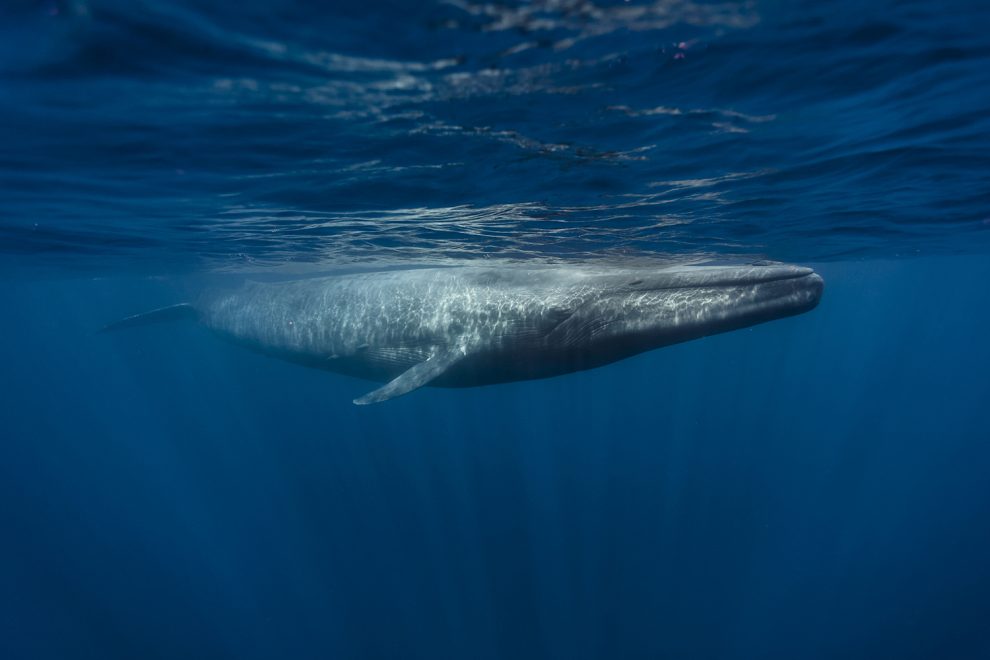The blue whale is the largest animal on Earth. It’s also among the loudest.
Image of hydrophone deployment on the seafloor, with the hydrophone stand still in the grip of the robotic hand of a remotely operated vehicle. (Image credit: © 2015 MBARI)
“Sound is a vital mode of communication in the ocean environment, especially over long distances,” said William Oestreich, a graduate student in biology at Stanford University’s Hopkins Marine Station. “Light, or any sort of visual cue, is often not as effective in the ocean as it is on land. So many marine organisms use sound for a variety of purposes, including communicating and targeting food through echolocation.”
Although whale songs have been studied for decades, researchers have had limited success in deciphering their meaning. Now, by recording both individual whales and their greater populations in the Northeast Pacific, researchers from Stanford and the Monterey Bay Aquarium Research Institute (MBARI) have identified patterns in the trills and bellows of blue whales that indicate when the animals are migrating from their feeding grounds off the North American coast to their breeding grounds off Central America. Their research was published Oct. 1 in Current Biology.
“We decided to compare daytime and nighttime song patterns from month to month, and there, in the divergence and convergence of two lines, was this beautiful signal that neither of us really expected,” said John Ryan, a biological oceanographer at MBARI and senior author of the paper. “As soon as that image popped up on the screen, Will and I were both like, ‘Hello, behavior.’”
Further analysis across the five years of hydrophone recordings could reveal new information about blue whale migration, a 4,000-mile journey that ranks among the longest in the world – and which the creatures repeat every year. Despite the immensity of blue whales and their travels, scientists know very little about their behaviors, such as how they are responding to changes in the ecosystem and food supply from year to year. Being able to predict the travel of whales along this important route could also help prevent ship strikes.
This content was originally published here.
EL 2 DE JUNIO DEL 2024 VOTA PARA MANTENER
TU LIBERTAD, LA DEMOCRACIA Y EL RESPETO A LA CONSTITUCIÓN.
VOTA POR XÓCHITL













Comentarios